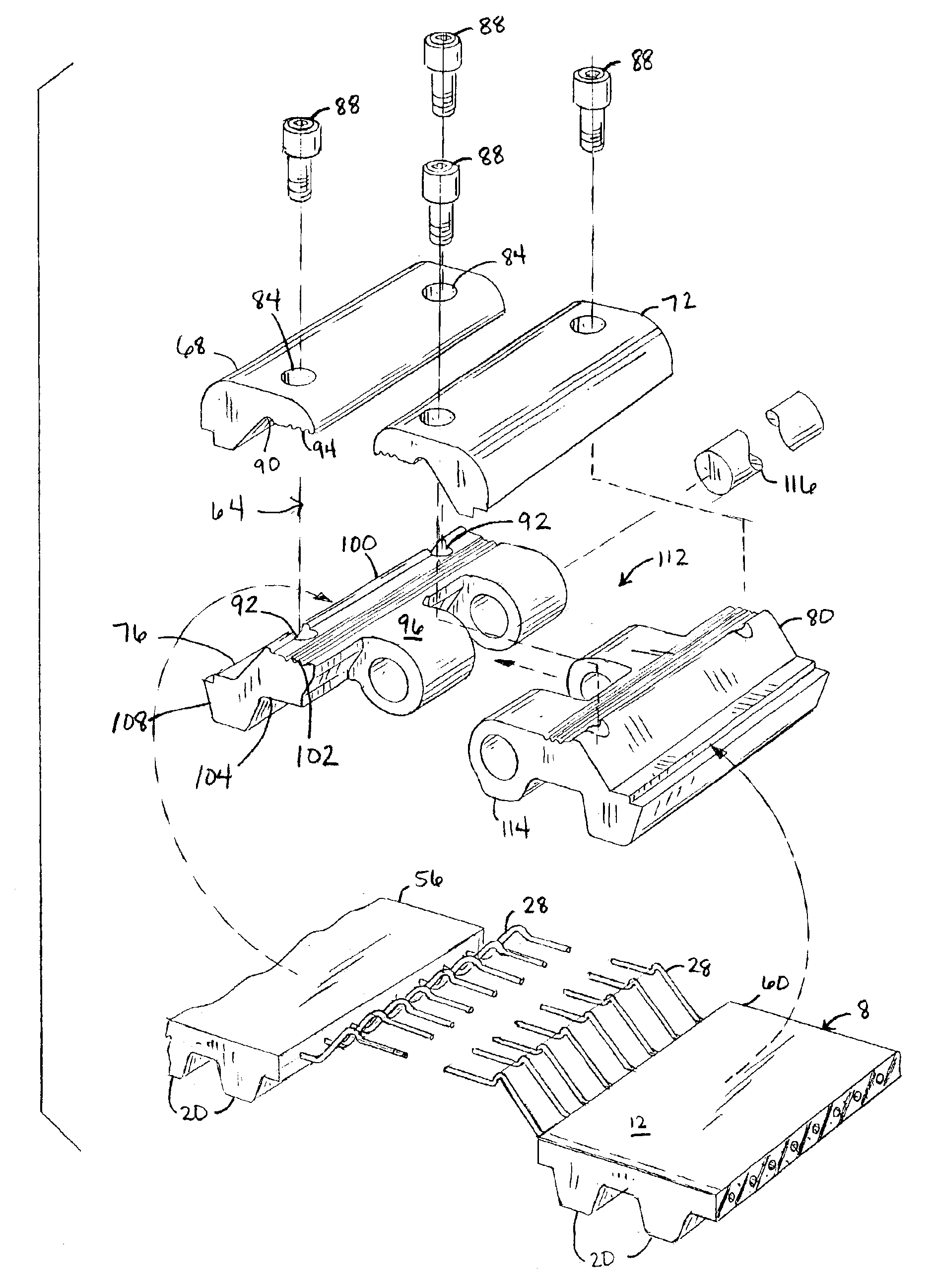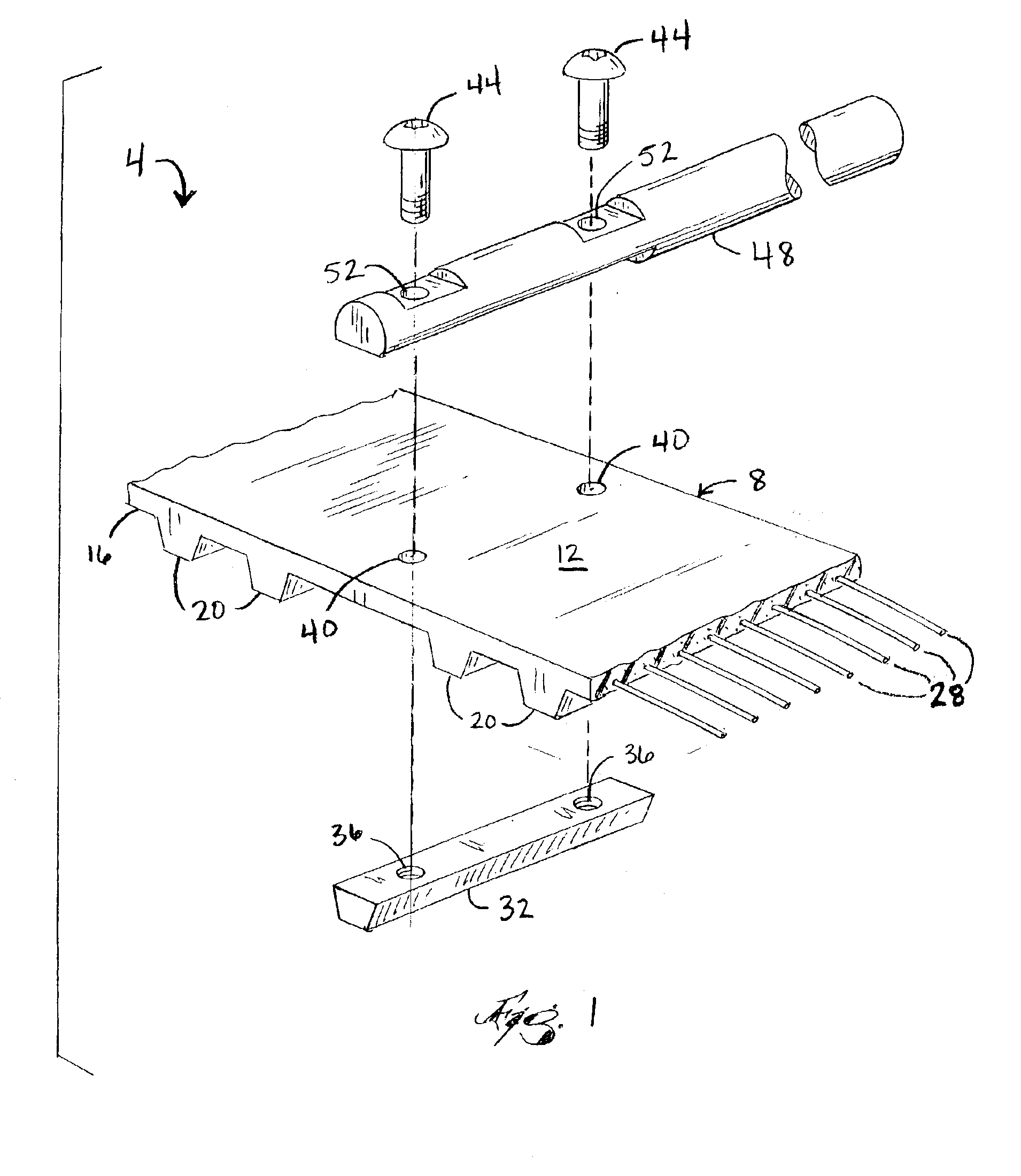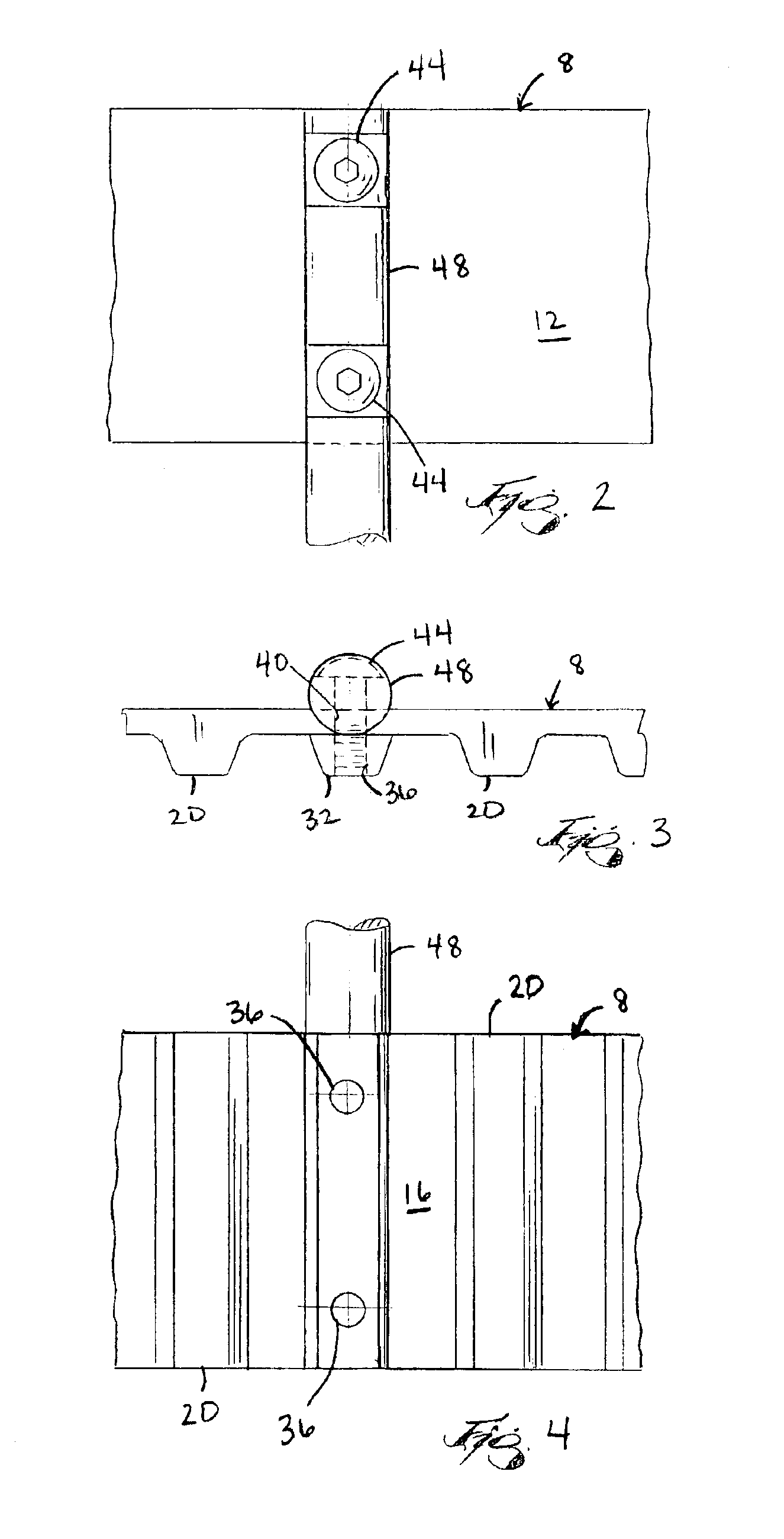Belt attachment device and method
a technology of belt attachment and belt, which is applied in the direction of belt fastening, belt/chain/gearing, transportation and packaging, etc., can solve the problems of difficult removal and replacement of conveyor belts, failure of bonding created in this type of attachment, etc., and achieve the effect of convenient mounting of items
- Summary
- Abstract
- Description
- Claims
- Application Information
AI Technical Summary
Benefits of technology
Problems solved by technology
Method used
Image
Examples
Embodiment Construction
[0020]FIG. 1 illustrates a portion of a conveyor belt assembly 4 according to one aspect of the present invention. The conveyor belt assembly 4 includes a flexible belt body 8 with a first surface 12 and second surface 16. It should be understood that the terms “first” and “second” are used for convenience to refer to the outer and inner surfaces of the belt. In the embodiment illustrated in FIGS. 1-4, the flexible belt body 8 is an endless belt. It is understood, however, that in other embodiments, such as the embodiment illustrated in FIGS. 5-7, the flexible belt body 8 may have discrete ends.
[0021]As shown in FIG. 1, the first surface 12 of the belt body 8 is a smooth, non-segmented surface. A plurality of flexible teeth 20 are formed with the belt body 8 on the second surface 16. The belt body 8 and teeth 20 are formed of a resilient material, such as rubber. It is understood by those skilled in the art that the belt body 8 and teeth 20 may be formed of any suitable flexible mat...
PUM
 Login to View More
Login to View More Abstract
Description
Claims
Application Information
 Login to View More
Login to View More - R&D
- Intellectual Property
- Life Sciences
- Materials
- Tech Scout
- Unparalleled Data Quality
- Higher Quality Content
- 60% Fewer Hallucinations
Browse by: Latest US Patents, China's latest patents, Technical Efficacy Thesaurus, Application Domain, Technology Topic, Popular Technical Reports.
© 2025 PatSnap. All rights reserved.Legal|Privacy policy|Modern Slavery Act Transparency Statement|Sitemap|About US| Contact US: help@patsnap.com



